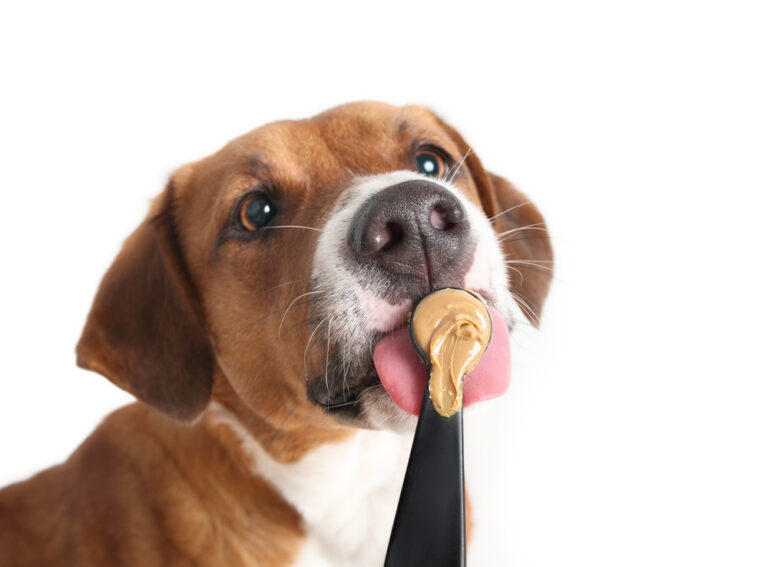My Dog Fell Down the Stairs and is Limping Now
When you notice that your dog has fallen down the stairs and is limping, it’s a clear sign that something might be amiss.
My Dog Fell Down the Stairs and is Limping, dogs are curious, and sometimes accidents happen, but it’s important to assess the situation and take appropriate action to ensure your furry friend’s well-being.
Limping is a common indicator that your dog might have sustained an injury from the fall.
Just like humans, dogs can experience pain, strains, sprains, or even fractures when they take a tumble, especially down a flight of stairs.
The limping is their way of telling you that something is hurting.

My Dog Fell Down the Stairs and is Limping and Here’s what you can do:1
- Assess the Situation: Start by gently approaching your dog. Observe their movements and body language. Are they holding one paw up? Are they putting less weight on one leg? This can give you clues about which leg might be injured.
- Check for Obvious Signs of Injury: Gently examine the leg that seems to be causing the limp. Look for swelling, bruising, cuts, or anything that seems out of the ordinary. Be cautious while touching the leg, as your dog might be sensitive due to pain.
- Rest and Limited Movement: Allow your dog to rest and avoid putting too much pressure on the injured leg. Discourage running, jumping, or any vigorous activity that could worsen the injury.
- Ice and Support: Applying a cold compress (wrapped in a towel) to the affected area for about 15 minutes can help reduce swelling. If your dog is cooperative, you can create a makeshift sling using a towel to support the injured leg while they walk.
- Monitor and Time: Keep a close eye on your dog’s behavior. If the limp seems to improve within a day or two, it might have been a minor strain. However, if the limp persists or worsens, it’s crucial to consult a veterinarian.
- Visit the Vet: If the limp doesn’t improve or if you notice other signs of distress (whimpering, loss of appetite, lethargy), it’s best to consult a veterinarian. They can perform a thorough examination, potentially take X-rays, and recommend the appropriate treatment.
Remember that while limping is a visible sign of discomfort, some dogs are remarkably good at hiding their pain. So, even if your dog seems to be managing, it’s better to be cautious and seek professional advice to ensure that any underlying injuries are properly addressed.
Why did my Dog Fell Down the Stairs and is Limping? Dogs are curious creatures, always exploring their surroundings with boundless energy.
But what happens when that curiosity leads to an unintended misstep down the stairs?
We’ve all been there, witnessing our beloved furry friends stumble in a way that tugs at our heartstrings. Yet, fret not – dogs are more resilient than we might think.
Understanding the Impact of Falls on Dogs2
In the grand tapestry of doghood, falls are an occasional thread, but their consequences can vary. Consider factors like height, surface, and the dog’s size.
A tumble from a few steps might leave a sprightly pup unfazed, while an older dog might feel the impact more intensely.
Initial Assessment of the Dog
In the aftermath of a tumble, be your pup’s detective. Observe for limping, whining, or stiffness – telltale signs of distress.
Don’t be surprised if your dog’s pride takes a bruise more than their body does.
When to Seek Veterinary Attention
Of course, there are instances where swift action is vital. If your dog shows signs of weakness, disorientation, or continuous pain, don your superhero cape and whisk them to the vet.
It’s better to err on the side of caution.
Common Injuries Dogs Might Sustain
Much like us, dogs can sustain various injuries from a fall. Think fractures, sprains, and concussions. Even if your pup doesn’t seem worse for wear, underlying issues might reveal themselves later.

Steps to Take After a Fall
Providing a cozy nook and some TLC is essential post-tumble. Ice any swollen areas and enforce a “no-stairs” policy. A day of R&R might be just what the doctor ordered.
Preventing Falls in Dogs
An ounce of prevention is worth a pound of cure, as they say. Baby gates, teaching stair awareness, and vigilant supervision can create a safer environment for our four-legged companions.
Age and Falling
Youth whispers promises of elasticity, while age occasionally delivers creakiness. Younger dogs might bounce back quicker, but the resolute spirit of old dogs can’t be underestimated.
Small Dogs vs. Large Dogs
Size matters – even in the world of falls. Small dogs might sustain fewer injuries due to their lighter frames. Large dogs, however, might experience a bit more gravity-induced turbulence.
Signs of Hidden Injuries
Dogs are masters of disguise when it comes to pain. Changes in behavior, appetite, or mobility could be whispers of something deeper. Our furry friends often suffer in silence.
The Role of Fear and Anxiety
As social animals, dogs can mirror our emotions. A tumble might leave them rattled. Gentle strokes, soothing tones, and maybe a treat or two can go a long way in soothing their frazzled nerves.
Recovery and Rehabilitation
Just like superheroes have downtime after a mission, dogs need recovery time after a fall. Rest, medication (if prescribed), and regular check-ins with the vet are the steps on this path to healing.
Long-Term Effects of Falls
Sometimes, the ripples of a fall extend beyond the splash. Joint issues and recurring discomfort can become unwelcome guests. Regular vet visits can catch these issues in their infancy.
Consulting a Veterinarian
Our trusty vets have the wisdom to decipher the subtleties of our dog’s distress. Consulting them ensures the right diagnosis and an actionable plan for your furry friend’s recovery.
Food and Dietary Requirements
- Banana: Dogs can enjoy the natural sweetness and health benefits of bananas in moderation.
- Asparagus: A nutritious veggie that can be a crunchy and tasty treat for your furry friend.
- Strawberry: Rich in vitamins, strawberries make a delightful occasional snack for dogs.
- Orange Chicken: Plain cooked chicken without spices or sauces can be a safe protein source for dogs.
- Almond Butter: Avoid almonds, but dogs can indulge in unsalted and unsweetened almond butter as an occasional treat.
- Quesadilla: Plain tortilla with a small amount of cheese can be a simple treat for dogs.
- Pita Bread: A small piece of plain pita bread can be given as an occasional snack.
- Ricotta Cheese: Dogs may enjoy a little ricotta cheese as an occasional treat, but avoid excessive amounts.
- Provolone Cheese: Offer a tiny piece of provolone cheese as a special reward for your furry companion.
- Banana Pudding: Plain banana pudding without additives or artificial sweeteners can be an occasional treat.
- Watermelon: A refreshing and hydrating fruit that dogs can enjoy in small, seedless portions.
- Coffee Chew Wood: Coffee and any type of wood should be kept away from dogs, as they are harmful.
- Oatmeal Cream Pie: Avoid sugary snacks like oatmeal cream pies, as they are not suitable for dogs.
- Teriyaki Sauce: Skip the teriyaki sauce, as the high sodium content is unhealthy for dogs.
- Mushroom Cream Soup: Keep creamy soups, especially those with mushrooms, away from your furry friend.
Arm & Hammer Fruit Twisters Fresh Breath Dental Treats for Dogs in Fruity Strawberry Flavor Baking Soda Dog Treats for Dental Health
Vitamins and Nutritional Pros and Cons
- Banana:
- Vitamin B6:
- Pros: Supports metabolism, immune system, and red blood cell production.
- Cons: Overconsumption may cause gastrointestinal upset due to high fiber content.
- Vitamin C:
- Pros: Acts as an antioxidant, boosts the immune system, and promotes healthy skin.
- Cons: Dogs produce their own vitamin C, so supplementation is usually unnecessary.
- Vitamin B6:
- Asparagus:
- Vitamin A:
- Pros: Essential for vision, immune function, and cell growth.
- Cons: High-fiber content may lead to stomach upset if given in large quantities.
- Vitamin C:
- Pros: Supports the immune system and helps absorb iron.
- Cons: Overfeeding may lead to gas or mild digestive issues.
- Vitamin A:
- Strawberry:
- Vitamin C:
- Pros: Provides a boost to the immune system and has antioxidant properties.
- Cons: Should be given in moderation due to natural sugars.
- Vitamin C:
- Orange Chicken:
- Vitamin B6:
- Pros: Supports metabolism and brain health.
- Cons: Avoid giving chicken with spices or sauces, which can be harmful.
- Vitamin B6:
- Almond Butter:
- Vitamin E:
- Pros: Protects cells from damage and promotes healthy skin and coat.
- Cons: Almonds themselves can be a choking hazard, so avoid direct consumption.
- Vitamin E:
- Quesadilla:
- Vitamin B6:
- Pros: Supports energy metabolism and nervous system function.
- Cons: High-fat content in cheese may lead to weight gain if given excessively.
- Vitamin B6:
- Pita Bread:
- Various B Vitamins:
- Pros: Essential for energy metabolism and nerve function.
- Cons: Pita bread can be high in carbohydrates, so feed in moderation.
- Various B Vitamins:
- Ricotta Cheese:
- Vitamin A:
- Pros: Important for vision and immune system support.
- Cons: High-fat content, so feed in small amounts to avoid weight gain.
- Vitamin B12:
- Pros: Supports nerve function and red blood cell production.
- Cons: Excessive consumption may lead to gastrointestinal upset.
- Vitamin D:
- Pros: Aids calcium absorption and supports bone health.
- Cons: Over-supplementation can lead to toxicity, as dogs can’t regulate vitamin D as effectively as humans.
- Vitamin K:
- Pros: Crucial for blood clotting and bone health.
- Cons: Excessive vitamin K can interfere with blood-thinning medications.
- Calcium:
- Pros: Essential for bone and teeth health, muscle function, and nerve transmission.
- Cons: Over-supplementation can lead to skeletal problems and urinary issues.
- Vitamin A:
- Provolone Cheese:
- Vitamin A, Vitamin B12, Vitamin K, Calcium:
- Pros: Similar to ricotta cheese, these vitamins and minerals offer various health benefits.
- Cons: High-fat and sodium content, so feed in moderation to avoid health issues.
- Vitamin A, Vitamin B12, Vitamin K, Calcium:
- Banana Pudding:
- Vitamin B6:
- Pros: Supports metabolism and various body functions.
- Cons: Pudding may contain added sugars and artificial ingredients, which are not suitable for dogs.
- Vitamin B6:
- Watermelon:
- Vitamin A, Vitamin B6, Vitamin C:
- Pros: Provide essential vitamins and hydration.
- Cons: Remove seeds and feed seedless watermelon in small portions to prevent choking.
- Vitamin A, Vitamin B6, Vitamin C:
Conclusion
Dogs are brave explorers, but a stumble down the stairs can give anyone pause.
By understanding the nuances of falls and their potential impact, we can be better prepared to tend to our loyal companions. So, the next time your dog takes a tumble, remember – a little care goes a long way.
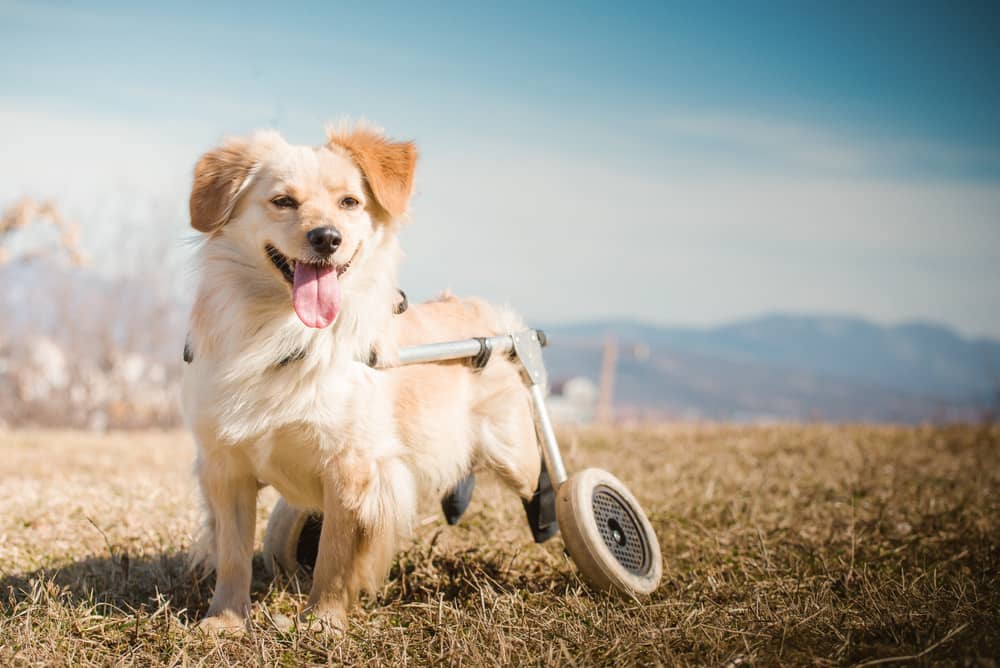
FAQs
How far can a dog fall without getting hurt?
Dogs’ resilience varies, but even a short fall could lead to injuries. It’s best to prevent falls altogether.
My dog fell down the stairs and seems fine. Should I still worry?
While your dog might appear fine, monitor for any behavioral changes or discomfort. Sometimes, injuries aren’t immediately obvious.
Can older dogs recover from falls as well as younger ones?
Older dogs might need more time to recover due to potential joint issues. Consult a vet for personalized advice.
Should I rush to the vet after every fall?
Not every fall requires a vet visit, but if your dog shows signs of pain or distress, it’s wise to consult a professional.
What can I do to prevent falls in my home?
Installing baby gates, teaching stair safety, and supervising your dog in potentially hazardous areas can help prevent falls.
“When Your Dog Takes a Tumble: Understanding Falls and Their Impact”
Dogs are curious creatures, always exploring their surroundings with boundless energy. But what happens when that curiosity leads to an unintended misstep down the stairs?
We’ve all been there, witnessing our beloved furry friends stumble in a way that tugs at our heartstrings. Yet, fret not – dogs are more resilient than we might think.
Understanding the Impact of Falls on Dogs
In the grand tapestry of doghood, falls are an occasional thread, but their consequences can vary. Consider factors like height, surface, and the dog’s size.
A tumble from a few steps might leave a sprightly pup unfazed, while an older dog might feel the impact more intensely.
Initial Assessment of the Dog
In the aftermath of a tumble, be your pup’s detective. Observe for limping, whining, or stiffness – telltale signs of distress. Don’t be surprised if your dog’s pride takes a bruise more than their body does.
How do you tell if a dog is okay after falling down stairs?
A dog’s resilience often masks its discomfort. Look for any sudden behavioral changes, unusual body postures, or difficulty in movement. If they seem unfazed and move naturally, they might be alright.
How can you tell if your dog is in pain after a fall?
Watch for signs like yelping, flinching when touched, or avoiding certain movements. An arched back or a tucked tail can also indicate discomfort.

How do you examine a dog after a fall?
Gently check their limbs for tenderness or swelling. Assess their walking, standing, and jumping abilities. Trust your instincts – if something seems off, consult a vet.
When should I take my dog to the vet after a fall?
If your dog shows signs of weakness, persistent limping, or seems disoriented, it’s time for a vet visit. Trust your gut and seek professional advice.
Should I let my dog sleep after a fall?
Rest is crucial for recovery. Allow them to sleep, but keep an eye on any changes when they wake. If they seem disoriented or in pain, consider consulting a vet.
What to check after falling down stairs?
Check for limping, difficulty standing, or changes in behavior. Monitor for any signs of distress or discomfort that might indicate internal injuries.
How can I tell if my dog has internal bleeding?
Pale gums, rapid breathing, and lethargy can signal internal bleeding. If you suspect this, seek immediate veterinary attention.
How do dogs act when they are injured?
Injured dogs might become withdrawn, restless, or unusually aggressive. They might also lick or bite the injured area.
Is my dog okay after hitting his head?
Monitor for signs of disorientation, unsteady walking, or changes in behavior. If these appear, consult a vet promptly.
What if my dog bumped his head but seems fine?
Even if your dog appears fine, keep an eye on them. Changes in behavior or physical symptoms can manifest later.
How do dogs act when they have a concussion?
Dogs with a concussion might display dizziness, vomiting, or difficulty balancing. They might appear disoriented or unusually lethargic.
How do I know if my dog has a mild concussion?
Mild concussions can lead to subtle signs like disorientation, unsteady walking, or changes in eating and drinking habits.
How do you tell if a small dog is okay after a fall?
Examine for any signs of limping, pain, or unusual behavior. Small dogs might hide their pain, so be attentive to changes.
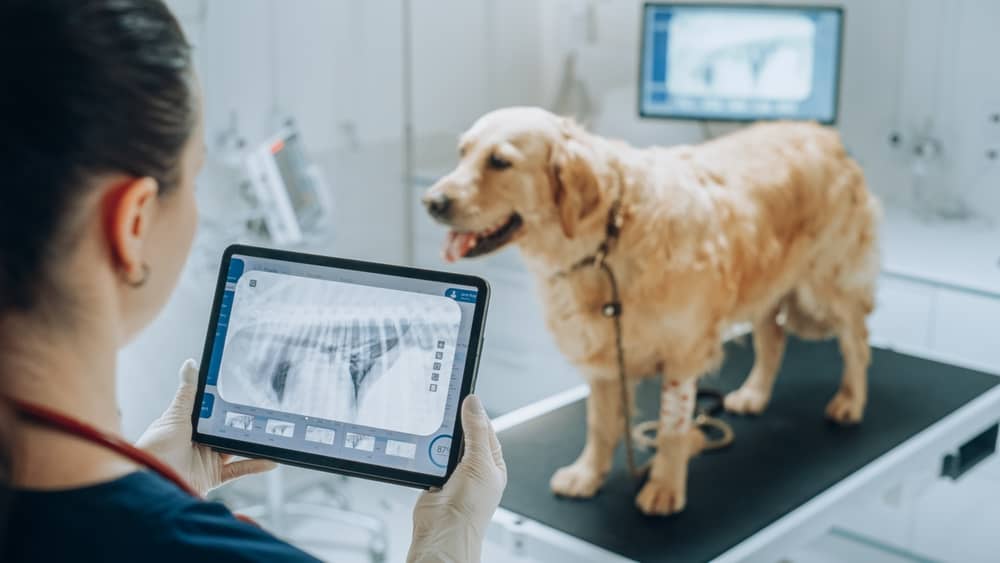
How long after dog hits its head can concussion symptoms start?
Concussion symptoms can appear immediately or within hours of the impact. Keep a close watch on your dog’s behavior.
What are the 3 symptoms of a mild concussion?
Look out for disorientation, loss of balance, and changes in responsiveness. If these persist, consult a vet.
WOPET Automatic Smart Feeder Dog Food Dispense with Camera,7L App Control
Do dogs get headaches if they hit their head?
While dogs can experience discomfort, diagnosing a headache is challenging. Look for overall signs of distress instead.
Do dogs feel pain when we hit them?
Physical punishment is harmful and painful for dogs. Positive training methods are more effective and humane.
What if I dropped my puppy on concrete?
Assess your puppy for any signs of distress or limping. If they seem fine and don’t display pain, they likely escaped unscathed.
Do puppies get hurt easily?
Puppies’ bones are still developing, making them more vulnerable to injury. Monitor their activities to prevent accidents.
Can puppies fall down stairs?
Yes, puppies can fall down stairs just like adult dogs. Their curiosity and lack of coordination can sometimes lead to tumbles.
What to do if dog steps in concrete?
Wash their paws with water to remove any residue. Concrete can be abrasive, so inspect their pads for any signs of irritation.
What to do after dog falls down stairs?
Offer comfort and observe for signs of injury. Rest is key, and if any abnormalities arise, consult a vet.
How do you help an injured dog down stairs?
Support your dog gently and use a towel or blanket as a makeshift sling under their belly. If they resist, stop and consult a vet.
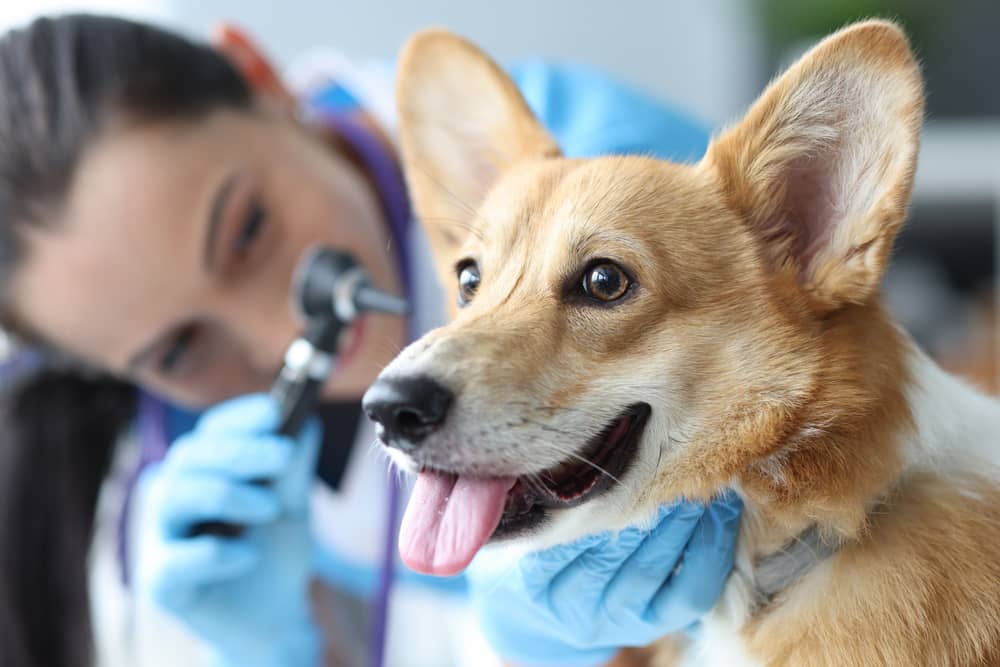
Is concrete bad for dogs paws?
Concrete can be rough on paws, leading to calluses or abrasions. Use paw protection or avoid prolonged exposure.
How long can dogs walk on concrete?
Short walks on concrete are usually fine, but extended exposure can lead to paw discomfort. Balance with softer surfaces.
What temperature is safe for dogs to walk on concrete?
Test the surface with your hand – if it’s too hot for you, it’s too hot for your dog’s paws. Walk during cooler parts of the day.
How long should a dog walk on concrete?
Limit concrete walking time, especially on hot days. Balancing with grass or dirt paths can help prevent paw irritation.
Does walking on concrete wear down dog nails?
Concrete can naturally help keep dog nails trimmed. However, excessive wear can lead to sensitivity and potential issues.
Can dogs walk on fresh concrete?
Avoid letting dogs walk on fresh concrete. Wet paws can leave marks and damage the surface. Keep them away until it’s fully cured.
What happens if you don’t water concrete?
Watering concrete helps with curing, preventing cracks and increasing strength. Skipping this step might lead to weaker concrete.
Should I spray water on my concrete after it is poured?
Yes, spraying water on newly poured concrete helps maintain moisture, aiding in proper curing and preventing cracks.
How soon after pouring concrete should I water it?
Start watering within 24 hours of pouring, and continue for about a week. This gradual process enhances concrete strength.
Should you wet concrete as it cures?
Absolutely, keeping concrete damp during curing enhances its strength and durability. It’s a critical step for optimal results.
Can dogs get hurt on stairs?
Yes, dogs can get hurt on stairs, especially if they slip or miss a step. Supervision and training are essential.
How long after a fall can pain start?
Pain might be immediate or take hours to set in. Monitor your dog closely, and if pain persists, seek medical attention.
What causes a dog to fall down stairs?
Dogs can fall due to various factors – slippery surfaces, lack of awareness, or a misstep. Their agility doesn’t make them immune to accidents.
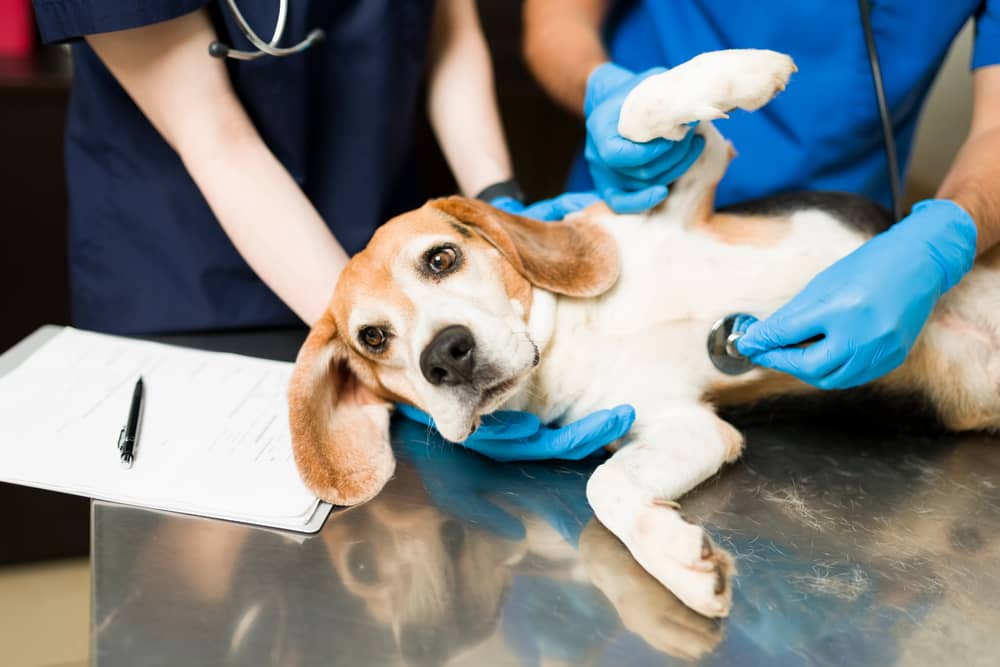
Can dogs recover from a fall?
Dogs can recover remarkably well from falls, especially if injuries are minor. Consult a vet to ensure proper healing.
Is it normal for dogs to fall?
Occasional falls are part of life’s unpredictable moments. Dogs’ agility and flexibility often help them recover without significant harm.
Can a dog get paralyzed from a fall?
While rare, severe falls can potentially lead to paralysis or nerve damage. Immediate vet attention is vital to assess the situation.
How do you know if your dog is going paralyzed?
A paralyzed dog might drag their limbs, lose coordination, or struggle to stand. Immediate veterinary evaluation is crucial.
Can a dog still wag tail if paralyzed?
Tail movement depends on the extent of paralysis. In some cases, tail wagging might still be possible even with partial paralysis.
What does a paralyzed dog look like?
A paralyzed dog might struggle to walk, have limp limbs, or even drag their hindquarters. It’s a distressing sight that warrants immediate care.
How often should you move a paralyzed dog?
Regular repositioning prevents pressure sores and helps with circulation. Consult your vet for specific guidelines.
Is a dog in pain when paralyzed?
Paralyzed dogs can experience discomfort, especially if pressure sores develop. Pain management is crucial for their well-being.
Why did my dog’s back legs go paralyzed?
Back leg paralysis can result from various causes – spinal injuries, herniated discs, or even infections. Veterinary assessment is essential for accurate diagnosis.
As responsible pet parents, it’s our duty to ensure our dogs’ safety and well-being.
While falls might be inevitable, understanding their implications and being attentive to our furry friends’ needs can go a long way in ensuring their health and happiness.
Remember, dogs rely on us to be their advocates, guardians, and sources of comfort in times of uncertainty.

